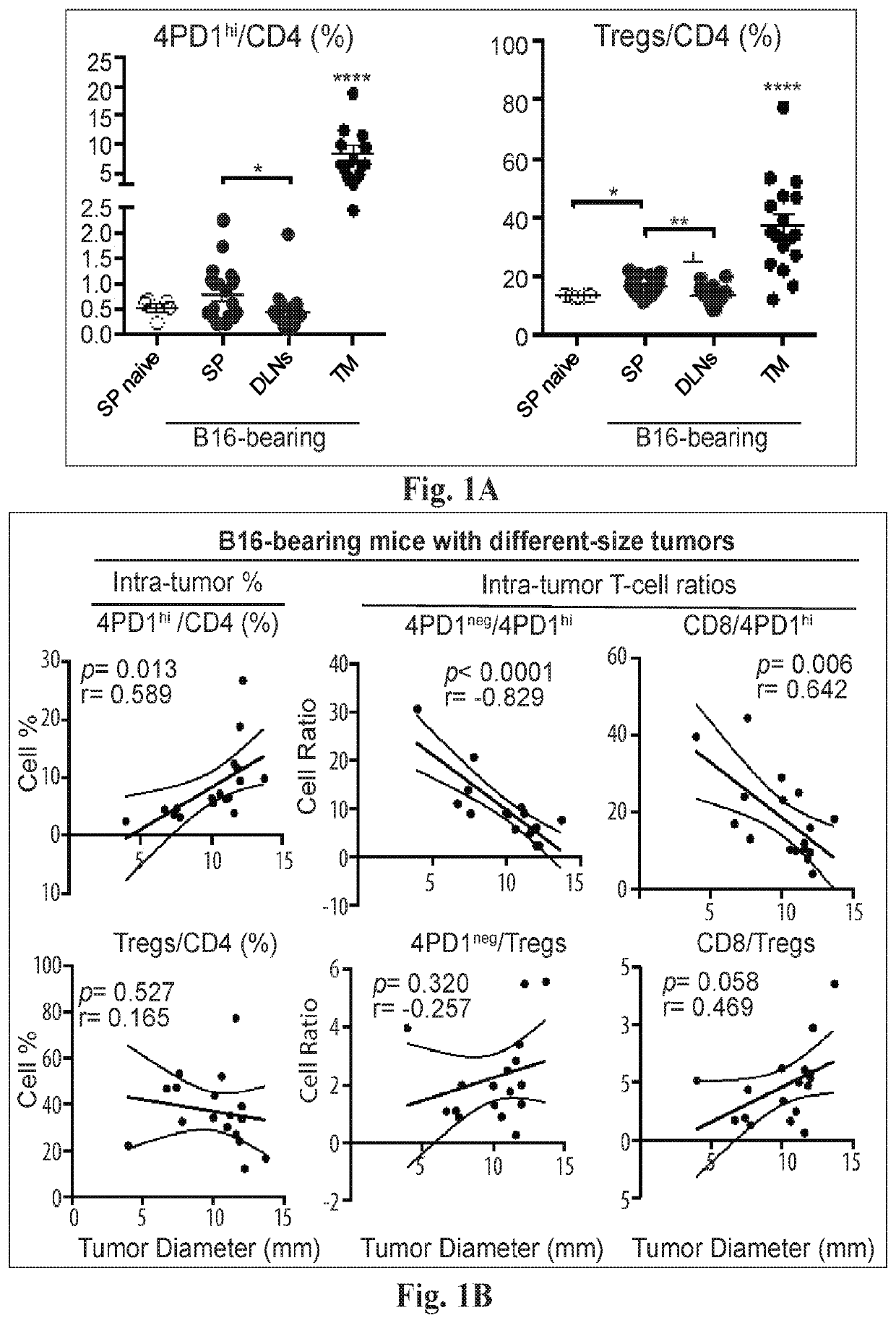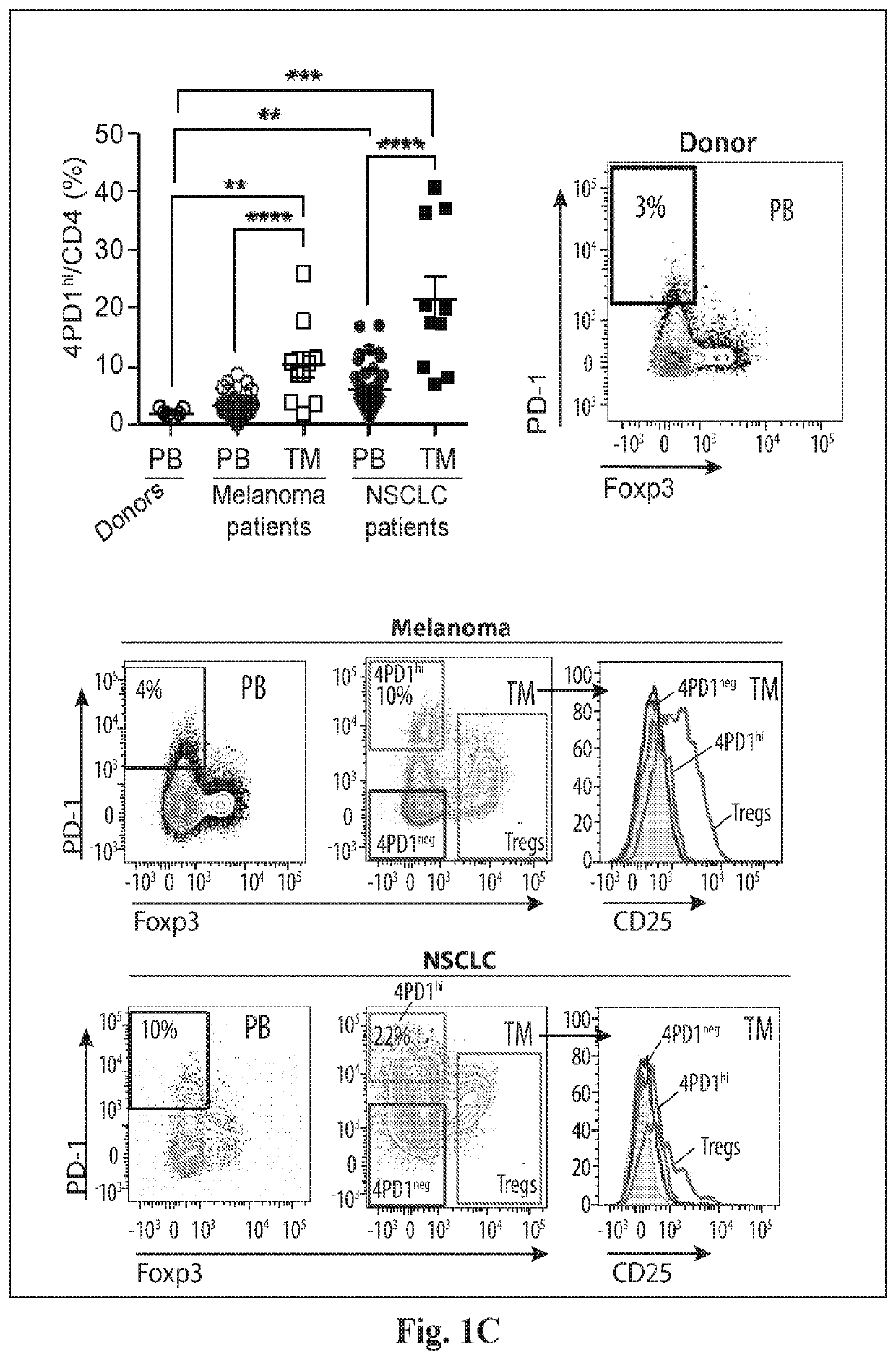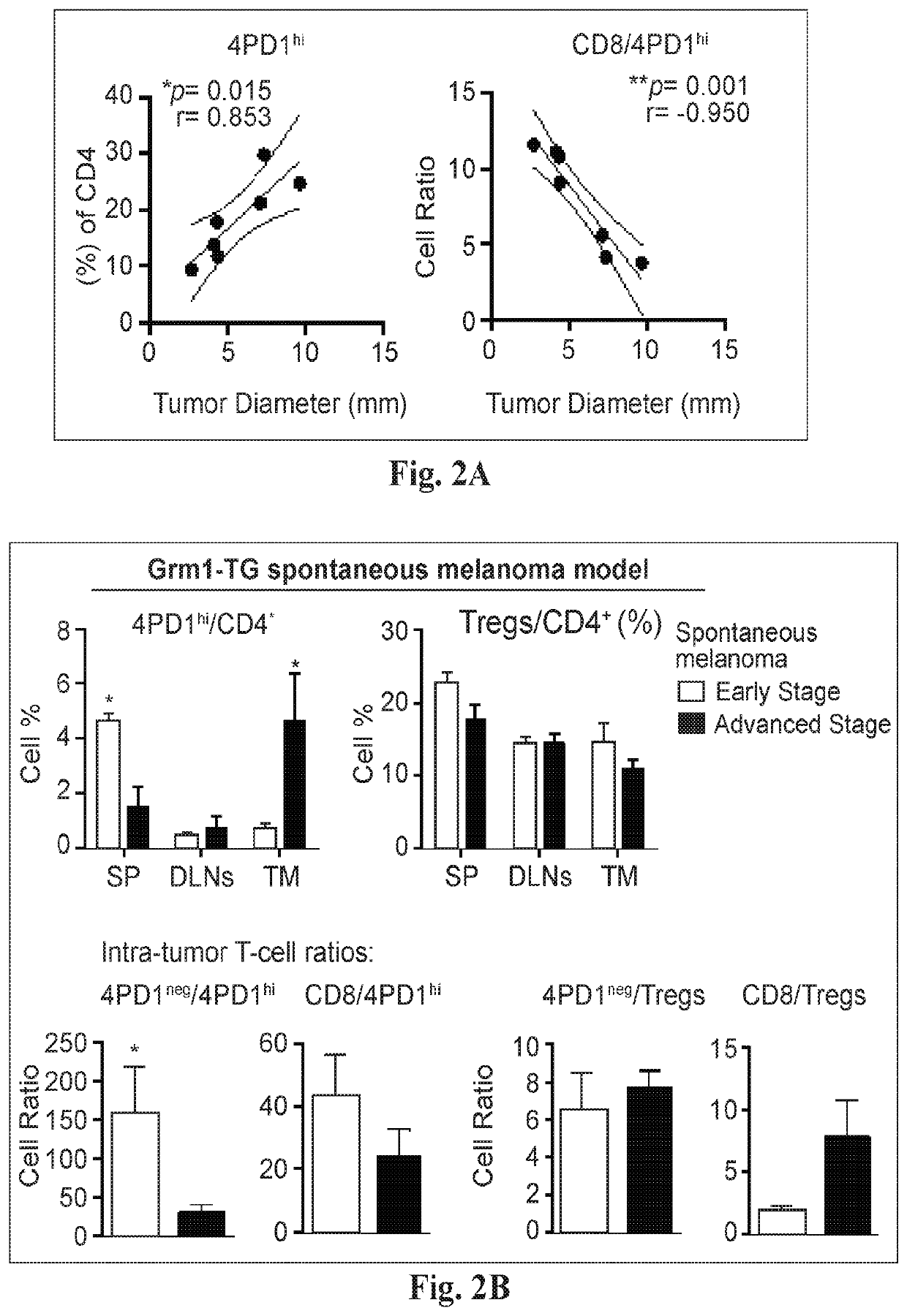Inhibition of CTLA-4 and/or PD-1 For Regulation of T Cells
a technology of t cell and ctla4, which is applied in the direction of antibody medical ingredients, drug compositions, immunological disorders, etc., can solve the problems of not blocking the immune checkpoint, high risk of developing severe immune-related toxicities, and no validated biomarker guiding selection of optimal checkpoints
- Summary
- Abstract
- Description
- Claims
- Application Information
AI Technical Summary
Benefits of technology
Problems solved by technology
Method used
Image
Examples
example 1
− T Cells Expressing PD-1 (4PD1hi) Accumulate at the Tumor Site in Mice and Humans
[0073]We assessed the tissue distribution of 4PD1hi in untreated naïve and tumor-bearing mice (FIG. 1A). We observed that 4PD1hi, similar to Tregs, are significantly enriched at the tumor site compared to secondary lymphoid organs in B16 melanoma-bearing mice (FIG. 1A). To test whether intra-tumor 4PD1hi accumulation correlates with tumor burden, we analyzed 4PD1hi frequency in correlation with tumor size in mice injected with increasing amounts of B16 cells (FIG. 1B). We found that intra-tumor 4PD1hi accumulate as a function of tumor size and the ratios between Foxp3−PD-1−CD4+ (4PD1neg) or CD8+ Teff and 4PD1hi inversely correlate with tumor burden (FIG. 1B). Of note, when the same analyses were performed with Tregs, correlations were not statistically significant (FIG. 1B). We confirmed these results in mice implanted with the same number of B16 cells (FIG. 2A) and further substantiated the associatio...
example 2
Human 4PD1hi Limit T-Cell Effector Functions
[0076]To determine whether 4PD1hi could contribute to tumor immune escape mechanisms, we tested these cells in different types of in vitro and in vivo suppression assays. To isolate mouse Foxp3-negative PD-1hi (4PD1hi) and mouse Foxp3-negative PD-1-negative CD4+ T cells (4PD1neg) as a control, we took advantage of Foxp3-GFP transgenic mice, where the transcription factor Foxp3 can be tracked by GFP expression. We first tested 4PD1hi from spleens of naïve Foxp3-GFP mice in standard suppression assays (FIG. 3A). 4PD1neg and PD-1-negative Tregs were used respectively as negative and positive controls for T-cell suppression (FIG. 3A). Naïve splenic 4PD1hi significantly reduced proliferation and activation of polyclonal CD4+ or CD8+ T cells, although to a lesser extent than Tregs (FIG. 3B, FIG. 4A-4B). We excluded the possibility that these observations could be the consequence of competition for proliferation between target T cells and 4PD1hi ...
example 3.4
Example 3. 4PD1hi Modulation During Immune Checkpoint Blockade
[0079]To evaluate the role of 4PD1hi in the development of anti-tumor immune responses in vivo, we monitored this cell population in cancer patients treated with immune checkpoint blockade. To detect human PD-1, we employed a mAb whose binding is not cross-blocked by the therapeutic αPD-1 Abs nivolumab or pembrolizumab (FIG. 7A). In metastatic NSCLC patients, we found that nivolumab monotherapy reduced peripheral 4PD1hi (FIG. 8A, nivo3, n=10). Interestingly, addition of a relatively low (FIG. 8A, nivo1+ipi1, n=11) or higher dose (FIG. 8A, nivo1+ipi3, n=8) of the αCTLA-4 ipilimumab to nivolumab produced proportional increases in circulating 4PD1hi compared to the patients treated with nivolumab monotherapy (FIG. 8A). We thus explored in mice the capability of αCTLA-4 monotherapy to increase 4PD1hi in a dose-dependent manner, by treating with 100 μg (standard dose in mice) or a higher amount (300 μg) of αCTLA-4 (FIG. 8B). A...
PUM
| Property | Measurement | Unit |
|---|---|---|
| mass | aaaaa | aaaaa |
| frequency | aaaaa | aaaaa |
| cell frequency | aaaaa | aaaaa |
Abstract
Description
Claims
Application Information
 Login to View More
Login to View More - R&D
- Intellectual Property
- Life Sciences
- Materials
- Tech Scout
- Unparalleled Data Quality
- Higher Quality Content
- 60% Fewer Hallucinations
Browse by: Latest US Patents, China's latest patents, Technical Efficacy Thesaurus, Application Domain, Technology Topic, Popular Technical Reports.
© 2025 PatSnap. All rights reserved.Legal|Privacy policy|Modern Slavery Act Transparency Statement|Sitemap|About US| Contact US: help@patsnap.com



